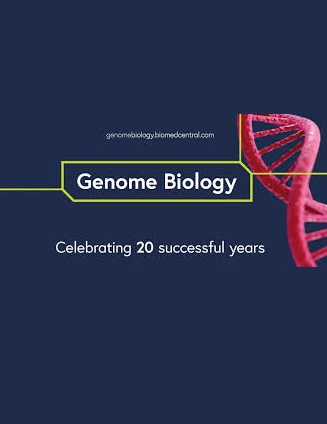Four near-complete genome assemblies reveal the landscape and evolution of centromeres in Salicaceae
IF 10.1
1区 生物学
Q1 BIOTECHNOLOGY & APPLIED MICROBIOLOGY
引用次数: 0
Abstract
Centromeres play a crucial role in maintaining genomic stability during cell division. They are typically composed of large arrays of tandem satellite repeats, which hinder high-quality assembly and complicate our efforts to understand their evolution across species. Here, we use long-read sequencing to generate near-complete genome assemblies for two Populus and two Salix species belonging to the Salicaceae family and characterize the genetic and epigenetic landscapes of their centromeres. The results show that only limited satellite repeats are present as centromeric components in these species, while most of them are located outside the centromere but exhibit a homogenized structure similar to that of the Arabidopsis centromeres. Instead, the Salicaceae centromeres are mainly composed of abundant transposable elements, including CRM and ATHILA, while LINE elements are exclusively discovered in the poplar centromeres. Comparative analysis reveals that these centromeric repeats are extensively expanded and interspersed with satellite arrays in a species-specific and chromosome-specific manner, driving rapid turnover of centromeres both in sequence compositions and genomic locations in the Salicaceae. Our results highlight the dynamic evolution of diverse centromeric landscapes among closely related species mediated by satellite homogenization and widespread invasions of transposable elements and shed further light on the role of centromere in genome evolution and species diversification.四个接近完整的基因组组合揭示了水杨科着丝粒的景观和进化
在细胞分裂过程中,着丝粒在维持基因组稳定性方面起着至关重要的作用。它们通常由串联卫星重复序列的大阵列组成,这阻碍了高质量的组装,并使我们了解其跨物种进化的努力复杂化。本研究利用长读测序技术对水杨科两种杨树和两种柳属植物进行了近全基因组测序,并对其着丝粒的遗传和表观遗传格局进行了表征。结果表明,在这些物种中,只有有限的卫星重复序列作为着丝粒组分存在,而大多数卫星重复序列位于着丝粒外,但具有与拟南芥着丝粒相似的均匀结构。相反,水杨科着丝粒主要由丰富的转座元件组成,包括CRM和ATHILA,而LINE元件仅在杨树着丝粒中发现。比较分析表明,这些着丝粒重复序列以种特异性和染色体特异性的方式广泛扩展并穿插卫星阵列,从而驱动着丝粒在序列组成和基因组位置上的快速更替。我们的研究结果强调了在卫星均质化和转座因子的广泛入侵介导下,近缘物种间着丝粒多样性景观的动态演化,并进一步阐明了着丝粒在基因组进化和物种多样化中的作用。
本文章由计算机程序翻译,如有差异,请以英文原文为准。
求助全文
约1分钟内获得全文
求助全文
来源期刊

Genome Biology
Biochemistry, Genetics and Molecular Biology-Genetics
CiteScore
21.00
自引率
3.30%
发文量
241
审稿时长
2 months
期刊介绍:
Genome Biology stands as a premier platform for exceptional research across all domains of biology and biomedicine, explored through a genomic and post-genomic lens.
With an impressive impact factor of 12.3 (2022),* the journal secures its position as the 3rd-ranked research journal in the Genetics and Heredity category and the 2nd-ranked research journal in the Biotechnology and Applied Microbiology category by Thomson Reuters. Notably, Genome Biology holds the distinction of being the highest-ranked open-access journal in this category.
Our dedicated team of highly trained in-house Editors collaborates closely with our esteemed Editorial Board of international experts, ensuring the journal remains on the forefront of scientific advances and community standards. Regular engagement with researchers at conferences and institute visits underscores our commitment to staying abreast of the latest developments in the field.
 求助内容:
求助内容: 应助结果提醒方式:
应助结果提醒方式:


